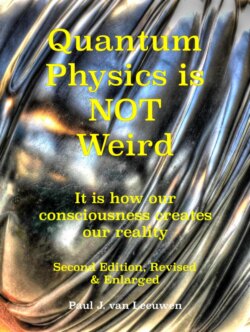Читать книгу Quantum Physics is NOT Weird - Paul J. van Leeuwen - Страница 20
На сайте Литреса книга снята с продажи.
The classical view of the universe at the end of the 19th century
ОглавлениеThe subject of the previous paragraphs was the rise and the great success of classical physics. It has now hopefully become clear why, apart from a few imperfections, classical physics fits so seamlessly into our daily experience of material reality. We can summarize our own everyday experience of the world as follows:
If I want to move something, I must push it or pull it.
What I perceive exists objectively and independently of me. The world seems to exist with or without me.
Even when I am not looking at the moon, or when it has disappeared behind the horizon, I am sure that it is still 100% materially there.
According to classical physics, my inner experience of reality is an image that coincides with the "real" world around me.
Mathematics is the ultimate tool to create a model of the world that explains exactly how it works.
Causality, cause and effect, reigns absolute.
The whole is just the sum of the parts. After analyzing the parts first, in principle the whole is known.
In short, the world seems to us solid and permanent. Most scientists considered physics as virtually complete in the second half of the 19th century, except for a few problems. Smart young students like Max Planck were discouraged from pursuing a career in physics, because there would be no longer any honor to be gained in it. However, it would turn out utterly different.
